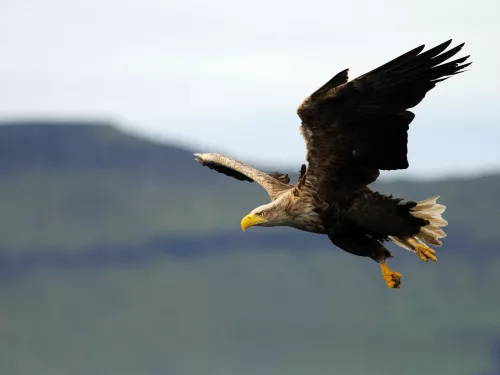White-clawed crayfish
The White-clawed crayfish is a freshwater, bronze-coloured crustacean with pale undersides to its claws - hence the name. It is under threat from an invasive and introduced species of crayfish.
The White-clawed crayfish is a freshwater, bronze-coloured crustacean with pale undersides to its claws - hence the name. It is under threat from an invasive and introduced species of crayfish.
The white-fronted goose lives up to its name - look out for the white patch on its forehead and around its bill. It does not breed in the UK, but flies here from Greenland and Siberia for the 'warmer' winter weather.
Found in compost heaps and under stones in gardens, the White-legged snake millipede is a common minibeast. Despite its name, it has about 100 legs. It is an important recycler of nutrients, feeding on decaying matter.
The white-letter hairstreak gets its name from the white lines that form a 'W' shape on its underside. It is an elusive butterfly, spending much of its time in the treetops.
The White-lipped snail comes in different colour forms, but always has a white band around the opening of its shell. It prefers damp spots in wide range of habitats, from gardens to grasslands, woods to hedges.
Living up to its name, the white-tailed bumblebee is black-and-yellow bee with a bright white 'tail'. A social bumble bee, it can be found nesting in gardens and woods, and on farmland and heaths.

The huge white-tailed eagle is our largest bird of prey. Persecuted to extinction in the UK, it has been successfully reintroduced in Scotland. Look for it on the Isle of Mull and off the west coast of Scotland.
The male whitethroat does, indeed, have a white throat! Arriving from Sub-Saharan Africa in April, it can be spotted on grassland and scrub, and along hedgerows. It is bigger than the lesser whitethroat.
The whooper swan is a very rare breeding bird in the UK, but has much larger populations that spend winter here after a long journey from Iceland. It has more yellow on its yellow-and-black bill than the Bewick's Swan.
The wigeon is a colourful duck that can often be spotted wheeling round our winter skies in large flocks. A dabbling duck, it surface-feeds on plants and seeds in shallow waters.
The red-tinged, flower clusters of Wild angelica smell just like the garden variety, which is used in making cake decorations. Wild angelica likes damp places, such as wet meadows and wet woodlands.
Wild carrot does, indeed, smell of carrots, but the roots are not like our cultivated, dinnertime favourite. Look for this umbellifer on chalk grasslands and coasts.